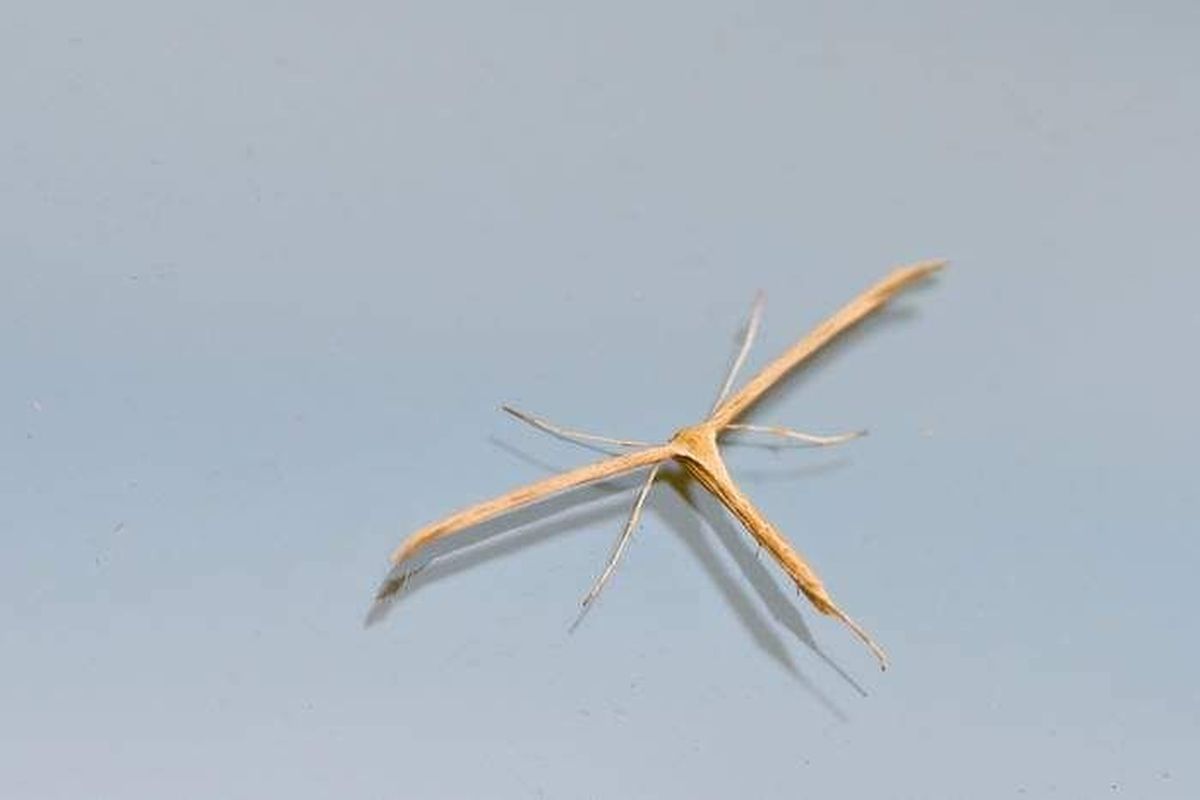Bugging the Northwest: The T-moth’s bizarre shape is only one of its unique traits
Jack High of Spokane was stumped by this odd-shaped moth that alighted on his house door. Nicknamed a T-moth, we’re fortunate to have them in the region. (Courtesy)
Jack High of Spokane had never seen a bug like the one that landed on his door in April. With two long, stick-like wings protruding at right angles from its narrow body, the insect resembled a tiny glider aircraft.
It stuck around for a while, so High snapped the critter’s picture and posted it on the Spokane Camera Club’s Facebook page. “Weird bug on the outside glass of my backdoor,” he wrote. “Any entomologist out there who can identify it?”
To solve the mystery, I forwarded his post to entomologist Michael Bush of the Washington State Department of Agriculture in Yakima. He quickly pointed out that the generic name for this angular insect fits it to a “T.”
“Some people call it as they see it – a T-moth!” he said, referencing the nickname given for the moth’s unique T-shape. Its common name, however, is a plume moth, of which there are more than 150 species in North America and at least nine in Washington state.
The species that settled on High’s door appears to be Emmilina monodactyla, also known as the morning-glory plume moth, Bush said.
“While this moth has become fairly common throughout the Pacific Northwest and North America, it originated in Europe where it is documented as one of the most common of plume moths in Britain,” he said.
And boy, we should be pleased that E. monodactyla found its way to America. In the moth’s caterpillar stage, it feeds on wild morning glories, also known as bindweed. A creeping perennial weed with twisty vines and trumpet-shaped flowers, bindweed is one of the most hard-to-control weeds among landscapes and agricultural crops, according to the Washington State Noxious Weed Control Board. If you’ve done battle against them in your lawn or garden, you know how tenacious their deep roots and sinewy vines are.
So the idea of fuzzy green caterpillars munching on this beastly weed should provide satisfaction – if not outright joy. From springtime to September, two overlapping generations of E. monodactyla’s caterpillars feed on the unwanted plant’s leaves and flowers, according to the United Kingdom’s wildlife conservation charity NatureSpot.
Like butterflies, E. monodactyla caterpillars eventually emerge into winged adults. During this final life stage, they continue to perform good deeds by pollinating flowers and serving as a food source for songbirds, bats and insects.
“The moth and its immature caterpillar are considered beneficial insects,” Bush said.
Unfortunately, not all plume moth species are do-gooders during the larvae stage. Washington state is also home to artichoke, geranium and snapdragon plume moths whose caterpillars eat the plants they’re named after.
Regardless of the species, when adult T-moths fly, their wings cleft into feathery plumes, hence it’s common name. But it’s when the moths are at rest that they become tricksters. By rolling their wings into twig-like rods, the moths appear as dried vegetation to predators, blending into the foliage to avoid them, Bush said.
All of which means, if you take time to smell the flowers, your nose could be inches away from a camouflaged T-moth.

